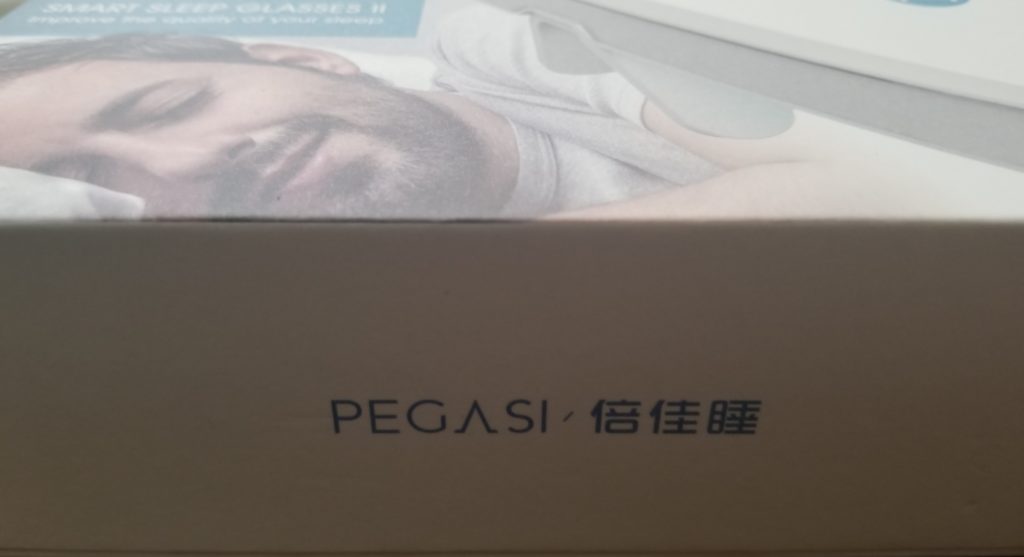So, you’ve played twelve hours of games and feel like crashing for the night — or morning — but your body isn’t quite agreeing with your mind. Or, you’re traveling from time zone to time zone, say, for events, and your body just is one or two time zones behind. The interesting proposition behind the GenHigh PEGASI Smart Sleep Glasses II (PEGASI glasses) concept is that the glasses and app together, are supposed to help improve the quality of your sleep through the use of “light therapy.”
Light therapy is a recognized form of therapy for a number of conditions, but for Events for Gamers’ purposes, jet lag, sleep difficulties and even dealing with keeping gamer time (aka being a night owl) is what we’re keeping in mind. Instead of lamps or the like, these are glasses you wear for daily intervals until the effect kicks in.
My own sleep patterns tend to be all over the place, so as both a gamer and events-goer, I wanted to see what the effect of the PEGASI glasses might be on the quality and duration of my sleep.
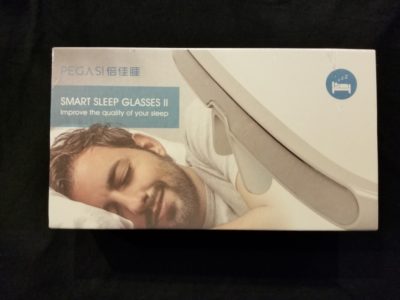
The package deal:
The PEGASI glasses come in a cellophane-wrapped mostly unassuming white box, with English and Mandarin Chinese language information owning the box’s real estate. Inside, the glasses are set into the base, while the instructions and a USB cable are neatly parked inside the padded lid. In some ways, it reminded me of the basic white and elegant Apple-style box packaging I‘ve seen.
One small thing I’d put on the “this would be kinda nice to have” list is a soft case or bag.for the glasses, to make it easier to carry the glasses without scratching or damaging them
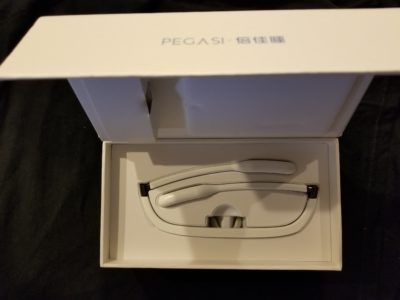
Setup:
Initial setup is simple. Plug in the short USB cable between the PEGASI glasses and a USB-capable power source, to charge or recharge the lithium-ion battery. In this instance, my laptop was the power conduit I chose to use. It took about half an hour each time to reach a full charge for the PEGASI glasses.
The device itself requires only a one-button operation. One button to turn the device on or off, to activate or deactivate the Bluetooth, and that’s it — kind of like using an old Atari analog one-button joystick. Next to the button is a set of lights to indicate the level of battery charge.
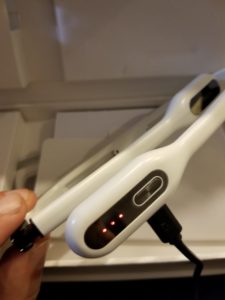
At some point before actually seeing how much energy or sleep you can reclaim through this wearable, setting up the PEGASI Sleep app is an optional addition. While I had some difficulty reliably pairing the app by way of Bluetooth between my phone to the glasses, the app isn’t necessary to use the glasses. The app’s current function is to show the battery status and activate or deactivate the glasses. Being able to monitor sleep quality that the PEGASI glasses might improve will require the use of a different wearable (and app), like a smartwatch or wristband health monitor. However, the app is supposed to see some increase in functionality after the conclusion of their current Kickstarter, which might help put some extra “oomph” behind the “Smart” descriptor of the glasses.
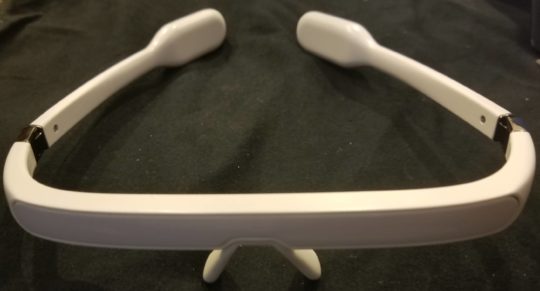
Performance:
Whether pairing with a smartphone and the app or not, the glasses are simple to use. Activate them for 30 minutes a day, which is an automatic process before they gradually shut off on their own. The recommended time to wear them is 7-9AM daily, but I struggled with using them in that window, although, of course, other folks may not.
The glasses shine a green-wavelength light into your eyes, which is intended to help induce the desired effect of more effective sleeping, among other benefits too. The glasses out-of-the-box proved to be comfortable and lightweight, certainly easy to wear for their recommended duration daily. They rested comfortably on my nose bridge and behind my ears. The field of vision is not obstructed by the PEGASI glasses too much, so it’s possible to do most tasks safely while wearing them for the 30-minute timeframe.
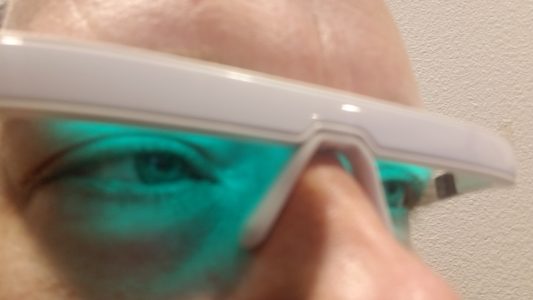
But, did the PEGASI glasses work for me? I can answer that with a conditional “yes.”. My sleep, after about five days of trying the Pegasi wearable, left me feeling more energized and more awake when I needed and able to fall asleep a bit more quickly and feel more rested in the morning. Sleep continued to feel improved while wearing the glasses, albeit sporadically, after that stretch of five days, for about two weeks. Thereafter, after I resumed my old sleep habits and didn’t use the PEGASI, which mean the benefits slipped away too. That leads me to why I qualified my “yes,” because what everyone needs for sleep varies, so does what it takes to achieve it (exercise, the right environment, etc). The basics for good rest remain the same, and that definitely helps too.
Do these glasses have a possible positive impact on frequent fliers hopping time zones? I wouldn’t know, until the next chance to fly through multiple time zones. But, I am more confident these glasses can work, after my experience trying them with improving sleep.
Pros:
- Simple to use, no hassles at all.
- Comfortable to wear
- Worked as advertised, at least for noticeably improving quality of sleep
Cons:
- Had some issues pairing the Bluetooth between the PEGASI glasses and the phone
- Not so much a con as an open question what functionality might be unlocked via the app after the Kickstarter.
Ideal for:
The GenHigh PEGASI Smart Sleep Glasses II are certainly not the first product or accessory you’d think of using if you’re a gamer, in the culture or business of games. But, considering the glasses improved my alertness and focus, as a benefit of improved sleep, playing a higher-quality game is a likely side effect. Secondarily, being able to travel and do business with less impact from jet lag is s potential benefit.
Based on the Kickstarter page for the PEGASI glasses, the MSRP is about $150, which is about average for products of this type. Without having compared other products to the PEGASI glasses, I cannot compare or contrast value, but the product did work for me.


